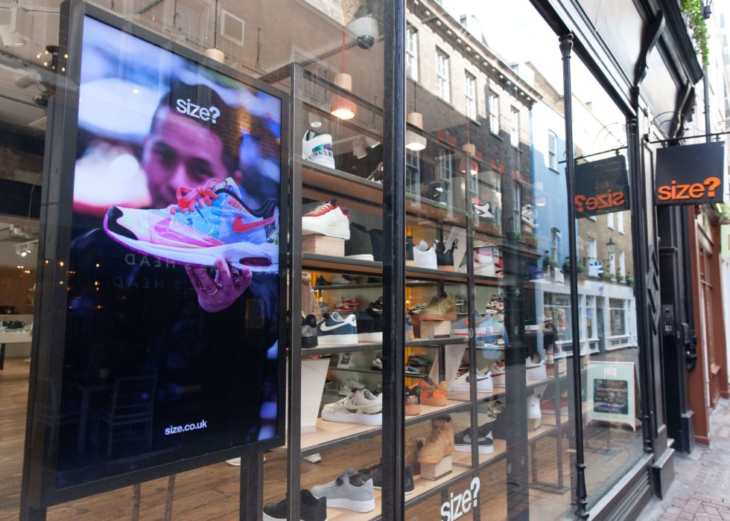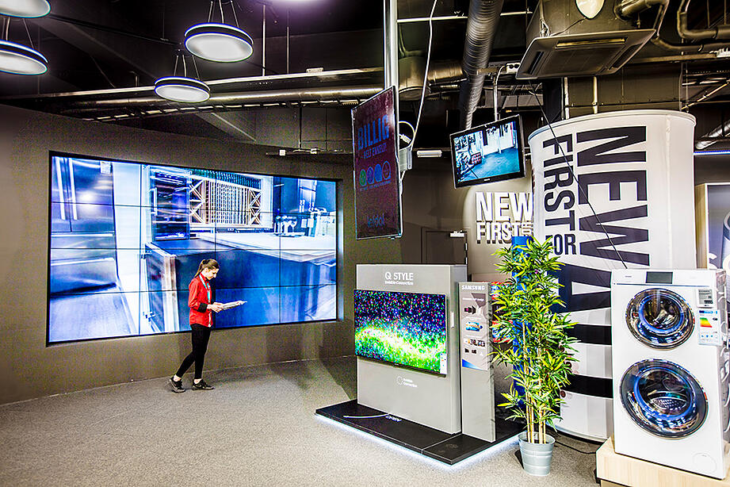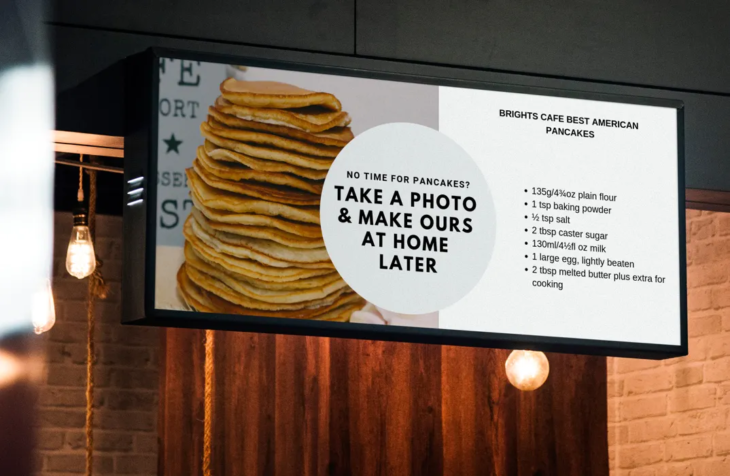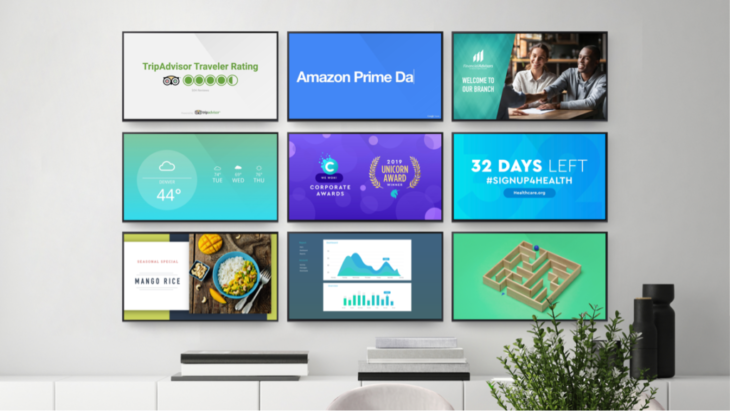Before we jump into how digital signage is made, let’s make sure we know what digital signage even is. Digital signage is the broad term covering maps, information, or any form of media displayed on a screen. It’s everywhere, from airports, museums, malls, and universities, and includes an extensive range of uses and products. Digital Signage has many pieces to the puzzle to make everything work together and fit nicely, with three key categories: hardware, software, and content. How digital signage is used and applied to your business entirely depends on your company goals, objectives, and needs.
Each of these categories is important to the creation and upkeep of great digital signage, so let’s take a look at what each of the components does, and how it can impact your business.

Source: Evoke-creative
Contents
Choose the best hardware
The hardware is what powers and holds the screen and content in one place. Digital signage hardware consists of displays or screens, media players, and brackets. Your media player, or signage device, will be connected to the TV or monitor and will turn it into a fully connective machine. There are three types of media players: consumer (cheaper, and aren’t designed for 24/7 usage), commercial (slightly more expensive, and better processing power), and industrial (allows for a consistent level of output).
As your screen is the main focus of the display, it’s important to think where it will be seen. Is the digital signage going to be in a school where you need a smaller screen, a small office, a massive warehouse, or a cafe? If the digital signage is playing for 8-9 hours a day, you can purchase something cheaper. Alternatively, if it will be running 24/7, you may need to invest in a more high-quality and professional display. The screen hardware gives you a heap of flexibility, providing you the ability to use a wide variety of screens based on your needs. Some screen types include the following:
- Tablets or iPads, which are great for touchscreen setups (reception, kiosks, meeting rooms). These can be great for cloud-based software.
- Monitors are a cost-effective way to show content on the screen and can be connected to a media player.
- Smart TV’s are useful for an all-in-one solution if you can’t hide media players, and are excellent for cloud-based software.
- Consumer-grade TV’s are suitable for the usage of fewer than 8 hours a day of display time. These can be used for both on-premise and cloud-based software.
- Commercial-grade TV’s can be used for continually running displays, and are a better fit for outdoor usage. These screens work best with cloud-based software.
As we move into a new technologically advanced age, it’s a great idea to future proof your digital signage. This means introducing hardware that can detect eye movement, multi-touch screens, using capacitive touch technology (detects anything conductive), or infrared technology. Upfront investments into these products will make your company look modern, which will, in turn, add value.

Source: Databeat.net
Find the easiest software solution
Software choices are just as important as hardware choices! Once you have uploaded the assets through the software, your system will need to know what and when the content is scheduled to play. There are two main types of software: cloud-based and on-premise. Both of these require WiFi! Cloud-based software is easy to scale, is cheaper, and removes the need for any hardware support. It also enables you to publish and update the display remotely. On-promise software as an alternative requires a direct connection to the software or media player. Usually, it requires you to be on the grounds.
The ideal content management software is one that you can manage easily, and has templates that can allow you to schedule and upload videos, content, or imagery. It should also be functional and user-friendly, and match your business needs. Lighthouse Digital uses an innovative cloud-based software created specifically for digital signage called ‘Emma’. A simple way to look at software is how easy it is to create and update the digital signage, and how easily it can integrate with the rest of the content or business. This means it should be able to integrate with professional services used in the company, such as social media, Excel, WordPress, third-party apps and services, or any accessible device or log in through an API.
Moving forward, interactivity beyond mere touch will help drive audience engagement. Digital signage software is developing to recognise speech, motion, gestures, and even be programmed to interact based on demographics. It will only push positive customer experience, which is becoming increasingly important as a ‘must-have’.

Source: Screen.cloud
Content is King
All of the above is the back-end, but what matters is what is on the screen. It can consist of menus, videos, the company targets and sales to date, updated safety measures at a warehouse, or even to showcase what’s new instore. As a business would operate a strategy for their marketing, digital signage is no exception. Creating a strategy for your content is useful, whether you are deciding on when to post the specials of the day, or you are curating social content pulled through to your screen. Some ideas are uploading brand videos or dynamic content that is regularly updated such as time, weather, or location.
Your digital signage should reflect the company’s goals and objectives. Are you looking to bring more people in the door and generate leads, or are you looking to inspire employees? Content that is designed to be visually appealing using a ‘less is more’ approach is a great way to get your message across quickly and straightforwardly. Rotating your content in a schedule is a great way to keep the audience engaged.

Source: blog.enplug.com
So, how are digital signs made?
The digital signage needs to be under management, not just from content, but understanding the hardware and software needs – such as remote installations or hardware failures. Digital signage is created by understanding your company and business needs, and then choosing the right hardware, software, and content. All digital signage should be tailored to you and your business.
